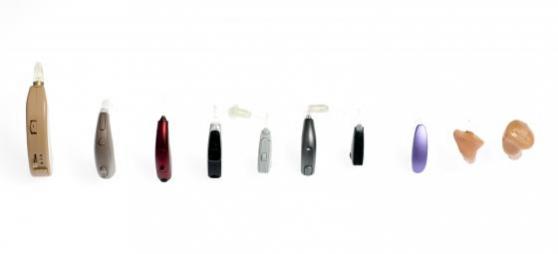
Behind-the-Ear or BTE aids are the most commonly used hearing aid model. The aid’s external part is placed behind the user’s ear and the internal part in the ear canal. A tube conveys sound into the internal part of the aid, which transfers it into the ear.
In-the-Ear aids are placed in the ear canal. It’s built based on a mould taken of the user’s ear. The aid is extremely small, so using requires more than a little manual dexterity.
A hearing aid consists of three parts: a microphone, an electric amplifier and a small headphone loudspeaker. Sound enters the aid via the microphone and is converted into electricity. The electric signal is amplified and modified in the amplifier after which the loudspeaker converts it back into audible sound. The user can adjust the volume to his or her liking. A computer is used to program the hearing aid to fit the user’s unique hearing needs. In newer digital hearing aids, the user can choose which algorithms to use based on the nature of the listening environment. This makes discerning speech sounds easier in npoisy environments.
Bone conduction hearing aids are used by people with microtia, a small ear canal or who for osme other reason can’t use a traditional hearing aid.
A cochlear implant is for people for whom the amplification provided by traditional hearing aids is not sufficient. Implanting involves surgery.
Battery
Hearing aids use batteries. The four most common sizes used are: 675, 13, 312 ja 10.
The zinc-air batteries used by many aids utilize air to generate electricity. The battery’s air holes are covered during storage. When the battery is put into use, the air holes are exposed and the battery starts to generate electricity as air enters it. When replacing the battery in a hearing aid, it’s a good idea to let the battery air out for a while before placing it in the aid’s battery case.
Batteries are free until the age of 18 or until graduating from higher education. Batteries are sold by importers, optical stores, pharmacies, large department stores and markets.
More information:
Success For Kids With Hearing Loss: Strategies For Keeping Hearing Aids on Young Children




